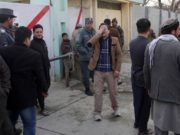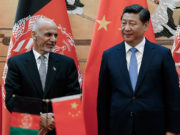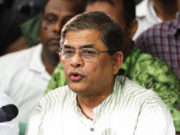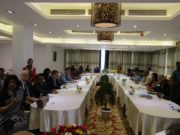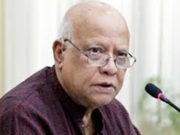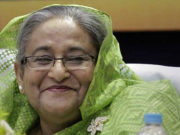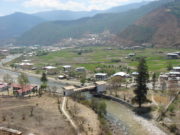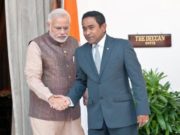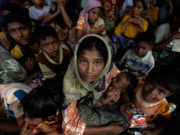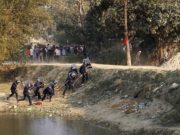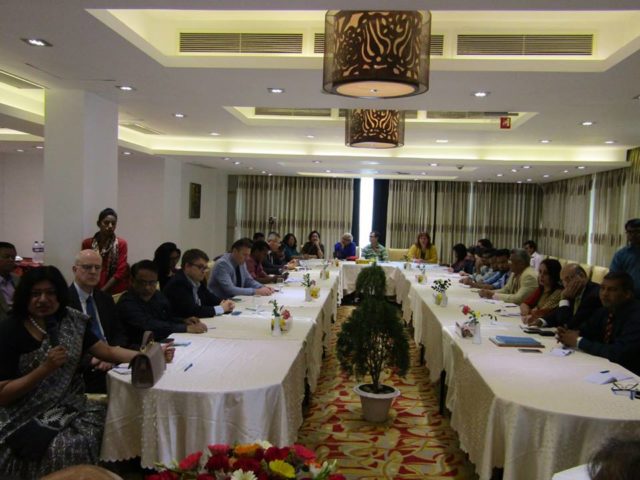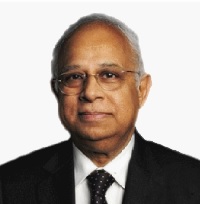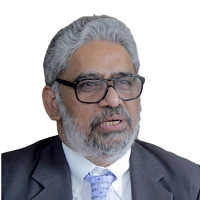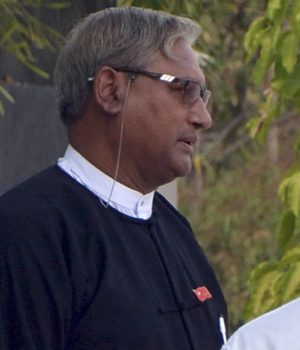It is not a counter narrative, but an alternative narrative that is required to counter violent extremism. The government must formulate polices for counter radicalisation. The law enforcement must understand the communication tools being used by youth today and thus be equipped to identify and prevent terror attacks. Presenting his paper on ‘Youth Radicalisation’, Shafqat Munir, BIPSS Research Fellow, made these suggestions while addressing a recent conference in Dhaka.
The conference, ‘Countering Violent Extremism: Building Resilience and Capacity’, was organized by the Bangladesh Institute of Peace and Security Studies (BIPSS) with support of the Canadian government, on Wednesday, 8 March.
Pointing to the issue of cyber radicalisation, Shafqat Munir said the Internet could reach an incalculably vast audience. He said, “The Internet is enough to share operational and tactical information, bomb recipes and other details and so the newly radicalized no longer have to travel anywhere for training.” He said that in Bangladesh alone there were over 20 million Facebook users. Self-proclaimed ISIS outfits had 50,000 to70,000 Twitter accounts, each with an average of 1000 followers. YouTube was widely used by al Qaeda affiliates. Other websites, blogs and even video games were used by extremists to appeal to the youth demographic.
Presiding over the conference, Maj Gen ANM Muniruzzaman (retd) said “A series of recent incidents attracted the attention of concerned stakeholders and emphasized the need to resolve the matter of violent extremism before it got out of hand.” He said long-term strategy was needed to solve the problem. Radicalisation and terrorism needed to be addressed holistically. Technical approaches would never give long-term solution.
The BIPSS president said, “So-called crossfire is not a solution. The rule of law is critically important. It differentiates us from the terrorists. It gives us a high moral ground.”
Presenting the paper on ‘Countering the Extremist Narrative’, Brig. Gen. Shahedul Anam Khan (retd), associate editor of The Daily Star, said it was important to determine why the message of the extremists resonates with some. Once this was determined, a strategy could be devised to counter the extremist narrative.
Brig. Gen. Anam (retd) said that the essentials in countering violent extremism included understanding, crafting, projecting, and evaluating. The extremist narrative needed to be understood. Some had personal narratives, some were germane to local ambience and there were no universal push-pull factors. He said the extremists’ narratives were based on four distinct plots – the political, the moral, the religious and the social. “Crafting a counter-narrative requires a better understanding of these plots,” he added.
High Commissioner of Canada Benoit-Pierre Laramee, chief guest at the event, said inclusion and diversity were important in uniting communities to counter terrorism. The Canadian government was supporting the programme to build resilience against violent extremism. He said Canada has faced a range of terror threats. Tackling the issue required comprehensive responses and an analytical understanding of the problem.
Vulnerabilities and inadequacies in the prison system made these excellent spaces for radicalisation, said Prof Abu Zayed Mohammed, BIPSS research fellow, presenting his paper on ‘Prison Radicalisation’. He spoke on the process of de-humanisation within the jails, the uncertain future, the radical narrative and the process of indoctrination.
Prof. Abu Zayed pointed out that there were 68 prison establishments in Bangladesh with a capacity to hold 33,314 inmates in total. Yet the number of inmates was 77,367. This was a huge discrepancy worsened by the fact that a large number were under-trial prisoners, waiting in uncertainty of the future.
He said the youth population came into contact with extremists and militants within the prisons particularly at certain ‘contamination’ points, such as food distribution points, prayer rooms, prison vans, medical facilities and internal transportation. He said it was important to have rehabilitation and de-radicalisation programmes in the prisons, but there were none in Bangladesh.
The conference concluded with an interactive table top discussion where participants of the younger generation gave voice to their views, apprehensions and aspirations.



